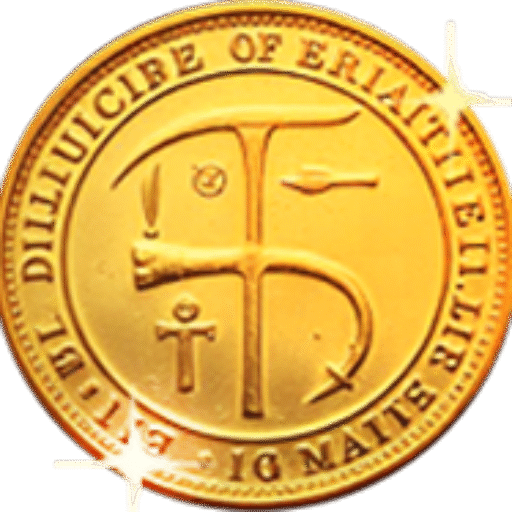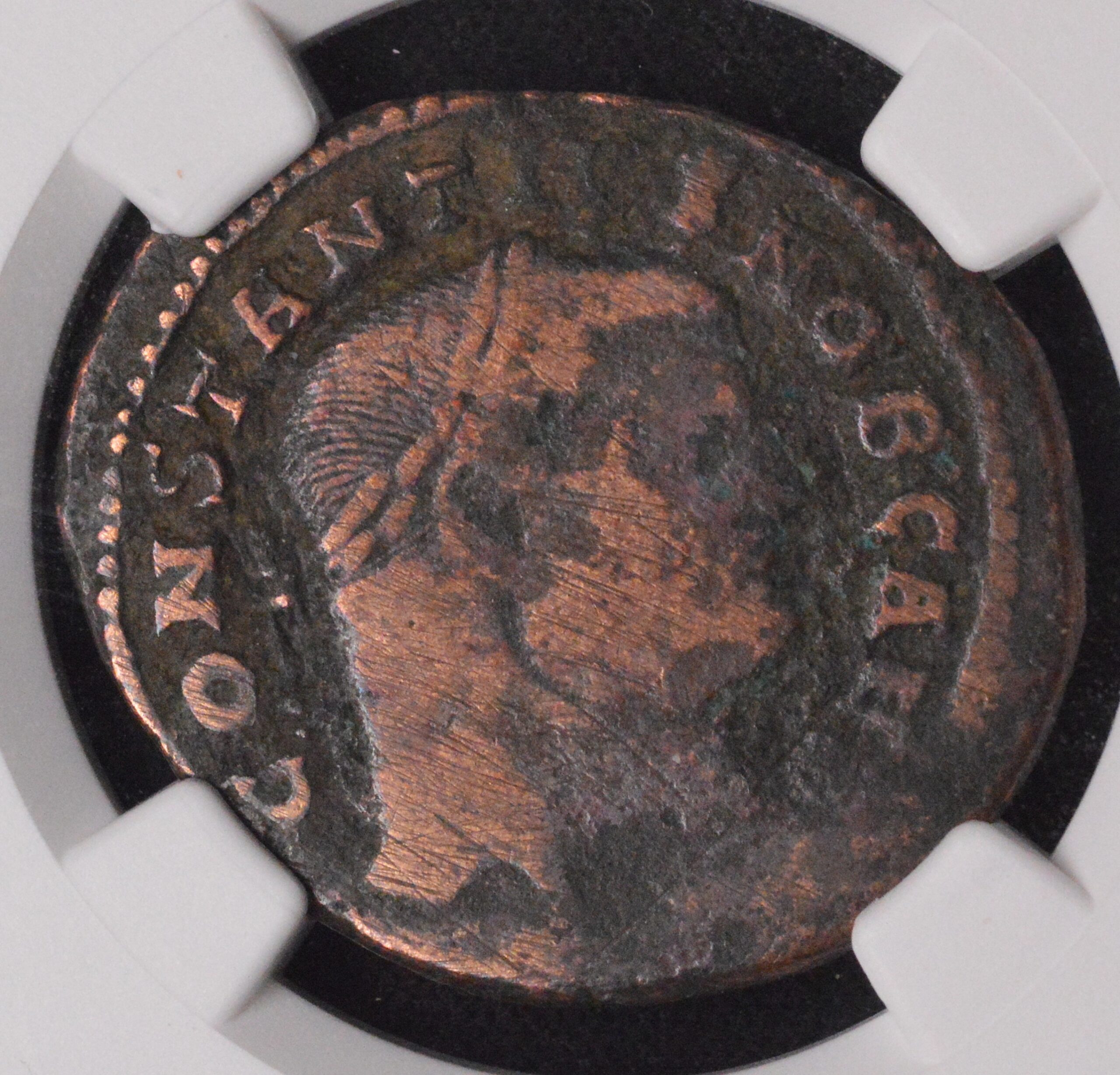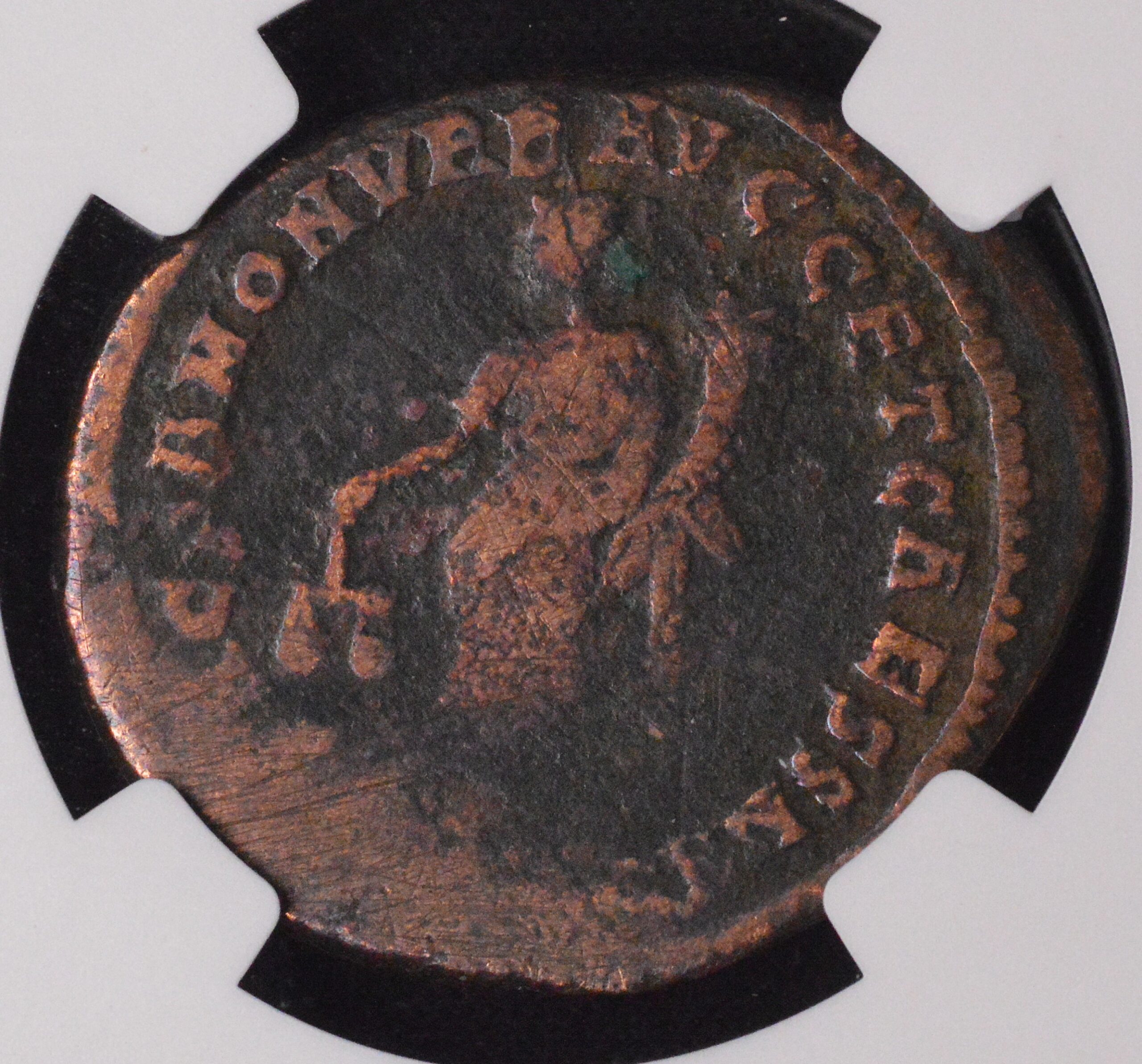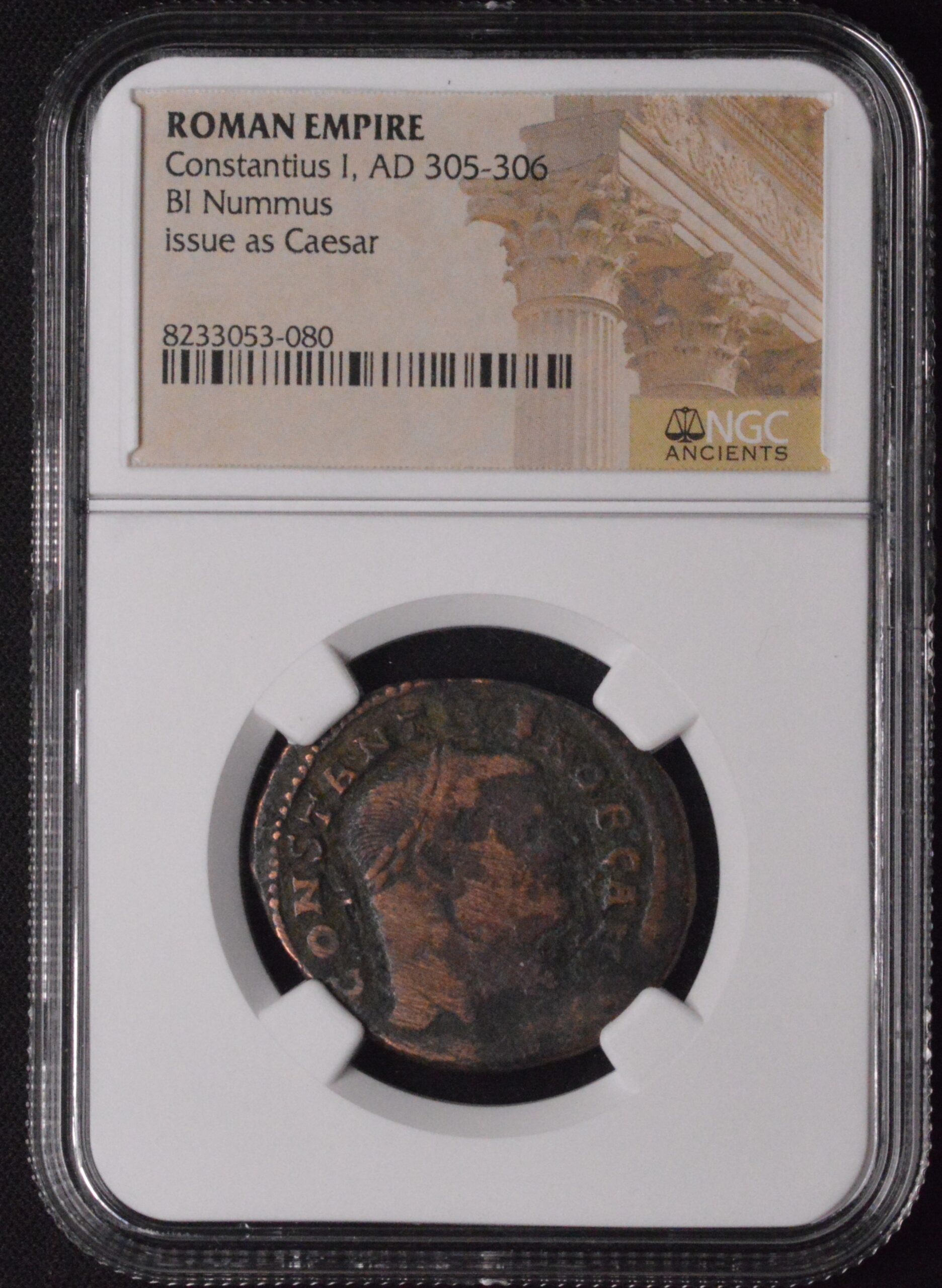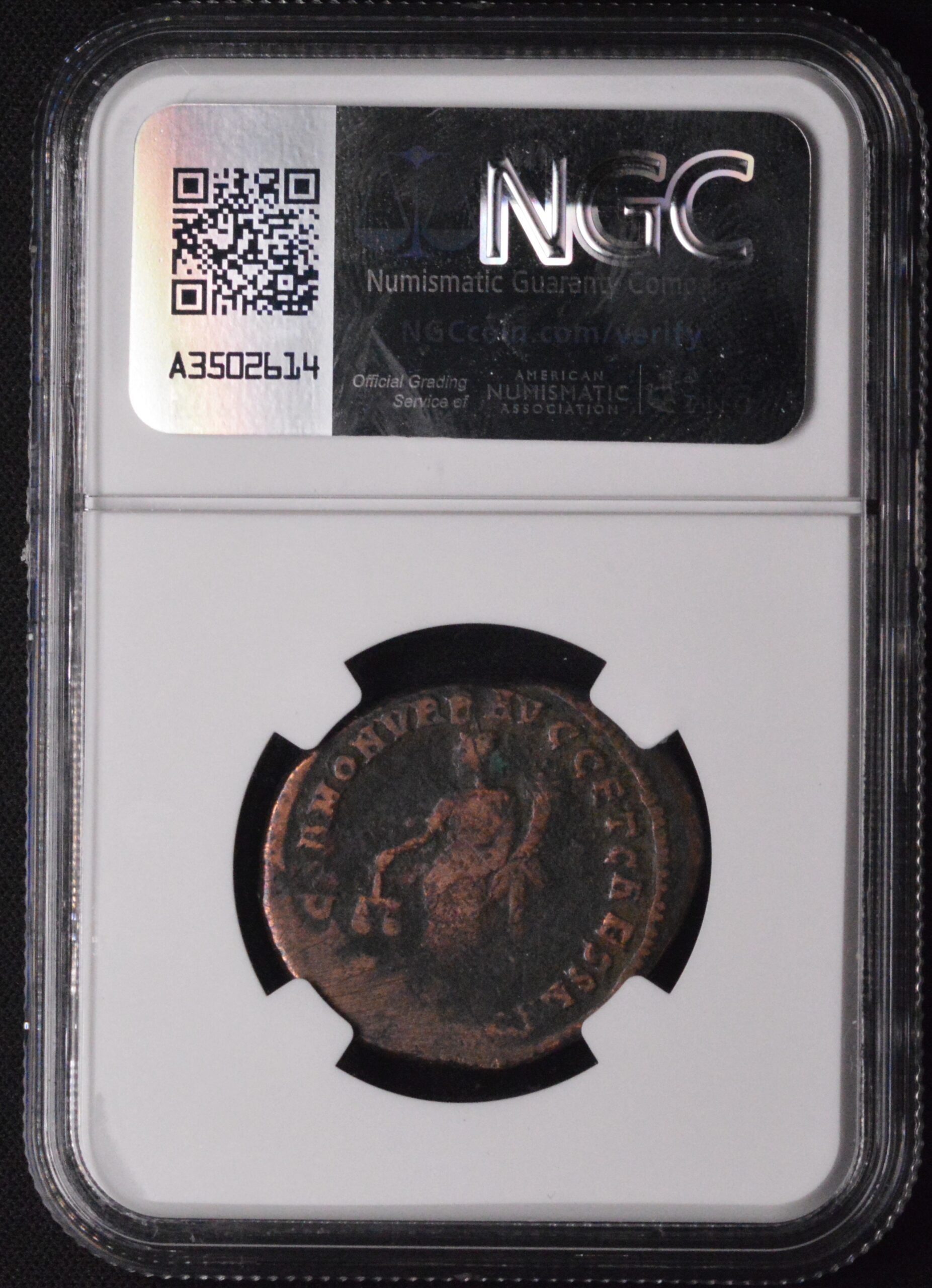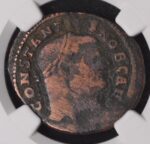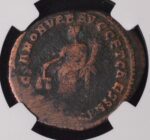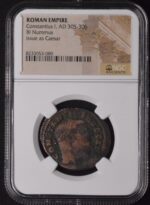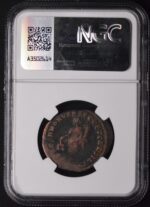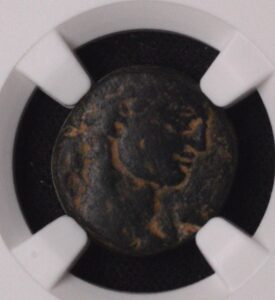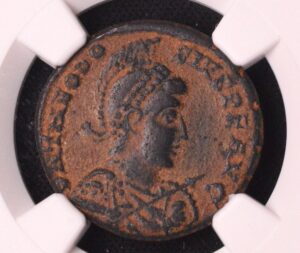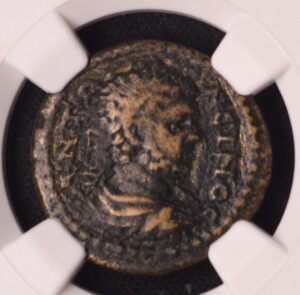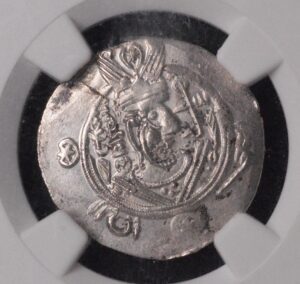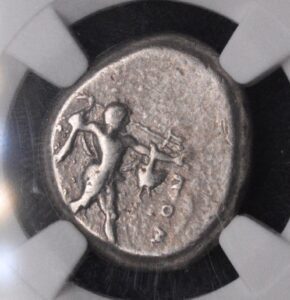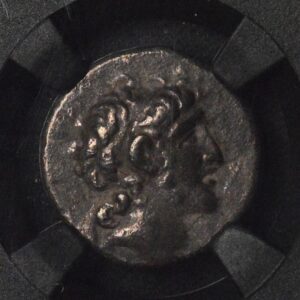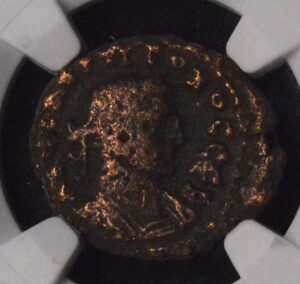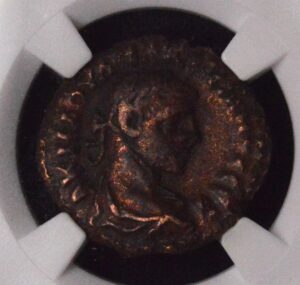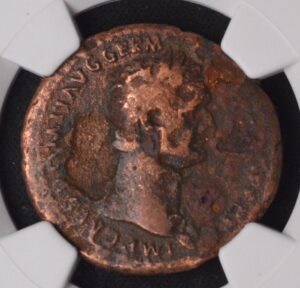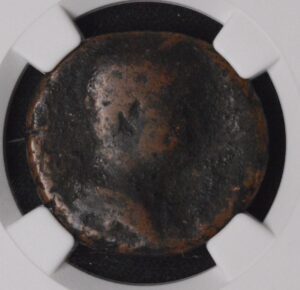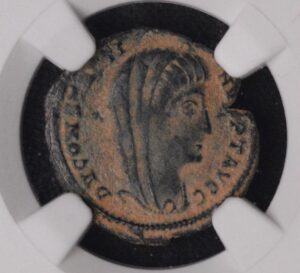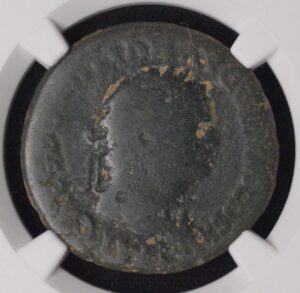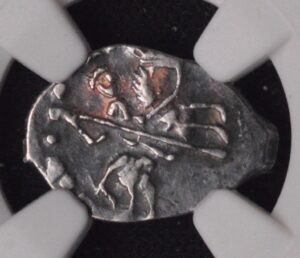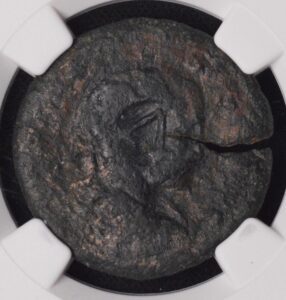Description
Constantius I Chlorus, who ruled as Roman Emperor from AD 305 to 306, was a pivotal figure in the late Roman Empire and a founding member of the Tetrarchy established by Diocletian. Before becoming emperor, he served as caesar (junior emperor) from 293 to 305, administering the western provinces, including Gaul and Britain. His military achievements include the reconquest of Britain from usurpers Carausius and Allectus and successful campaigns against Germanic tribes along the Rhine.
The Æ Follis struck under Constantius I Chlorus is a large bronze coin emblematic of late third and early fourth-century imperial reforms. This coin typically features a laureate or helmeted bust of Constantius on the obverse, sometimes flanked by his imperial titles, and a variety of reverse types that might include pagan deities, personifications like Genius, or military themes reflecting loyalty to the empire. The follis was a key circulation coin during his reign, evidencing the stabilization efforts under the Tetrarchic system.
Constantius’s tolerant approach to the Christian population—he limited anti-Christian actions to demolition of churches rather than outright persecution—set him apart from some contemporaries. He died suddenly in Eboracum (modern York) in July 306, after a British campaign. His death and the immediate proclamation of his son, Constantine the Great, by the legions sparked the end of the Tetrarchy and the beginning of a new era in Roman history.
The NGC-certified Æ Follis coin of Constantius I Chlorus is a highly collectible artifact, valued for both its historical significance and tangible link to this important transitional period of the Roman Empire. Collectors appreciate NGC grading for authenticity and condition assurance, and Constantius’s coins offer a direct connection to the rise of Constantine and the Constantinian dynasty.
In summary, this bronze Æ Follis is a genuine and historically rich coin from the short but crucial reign of Constantius I Chlorus, providing insights into late Roman military, economic, and religious developments.
Constantius I Chlorus, who ruled as Roman Emperor from AD 305 to 306, was a pivotal figure in the late Roman Empire and a founding member of the Tetrarchy established by Diocletian. Before becoming emperor, he served as caesar (junior emperor) from 293 to 305, administering the western provinces, including Gaul and Britain. His military achievements include the reconquest of Britain from usurpers Carausius and Allectus and successful campaigns against Germanic tribes along the Rhine.
The Æ Follis struck under Constantius I Chlorus is a large bronze coin emblematic of late third and early fourth-century imperial reforms. This coin typically features a laureate or helmeted bust of Constantius on the obverse, sometimes flanked by his imperial titles, and a variety of reverse types that might include pagan deities, personifications like Genius, or military themes reflecting loyalty to the empire. The follis was a key circulation coin during his reign, evidencing the stabilization efforts under the Tetrarchic system.
Constantius’s tolerant approach to the Christian population—he limited anti-Christian actions to demolition of churches rather than outright persecution—set him apart from some contemporaries. He died suddenly in Eboracum (modern York) in July 306, after a British campaign. His death and the immediate proclamation of his son, Constantine the Great, by the legions sparked the end of the Tetrarchy and the beginning of a new era in Roman history.
The NGC-certified Æ Follis coin of Constantius I Chlorus is a highly collectible artifact, valued for both its historical significance and tangible link to this important transitional period of the Roman Empire. Collectors appreciate NGC grading for authenticity and condition assurance, and Constantius’s coins offer a direct connection to the rise of Constantine and the Constantinian dynasty.
In summary, this bronze Æ Follis is a genuine and historically rich coin from the short but crucial reign of Constantius I Chlorus, providing insights into late Roman military, economic, and religious developments.
Constantius I Chlorus, who ruled as Roman Emperor from AD 305 to 306, was a pivotal figure in the late Roman Empire and a founding member of the Tetrarchy established by Diocletian. Before becoming emperor, he served as caesar (junior emperor) from 293 to 305, administering the western provinces, including Gaul and Britain. His military achievements include the reconquest of Britain from usurpers Carausius and Allectus and successful campaigns against Germanic tribes along the Rhine.
The Æ Follis struck under Constantius I Chlorus is a large bronze coin emblematic of late third and early fourth-century imperial reforms. This coin typically features a laureate or helmeted bust of Constantius on the obverse, sometimes flanked by his imperial titles, and a variety of reverse types that might include pagan deities, personifications like Genius, or military themes reflecting loyalty to the empire. The follis was a key circulation coin during his reign, evidencing the stabilization efforts under the Tetrarchic system.
Constantius’s tolerant approach to the Christian population—he limited anti-Christian actions to demolition of churches rather than outright persecution—set him apart from some contemporaries. He died suddenly in Eboracum (modern York) in July 306, after a British campaign. His death and the immediate proclamation of his son, Constantine the Great, by the legions sparked the end of the Tetrarchy and the beginning of a new era in Roman history.
The NGC-certified Æ Follis coin of Constantius I Chlorus is a highly collectible artifact, valued for both its historical significance and tangible link to this important transitional period of the Roman Empire. Collectors appreciate NGC grading for authenticity and condition assurance, and Constantius’s coins offer a direct connection to the rise of Constantine and the Constantinian dynasty.
In summary, this bronze Æ Follis is a genuine and historically rich coin from the short but crucial reign of Constantius I Chlorus, providing insights into late Roman military, economic, and religious developments.
CUSTOMER FEEDBACK




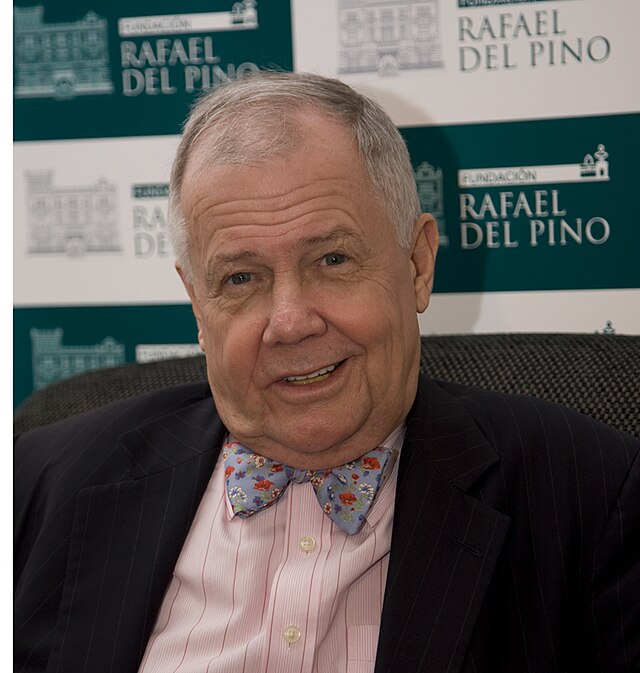



Related Products & Newly Released!
-
$400.00




SHIPPING POLICY
Your order is shipped from the United States with USPS tracking within one business day.
14 Day Return Policy
You can return your item back within
14 days of the purchase

Secure payments
Your payments are 100% secure and are processed through Square or PayPal on a protected security network.
SHIPPING POLICY
FREE International and Domestic (United States) shipping. Your order is shipped with USPS tracking 24 hours after you order.
14 Day Return Policy
You can return your item back within
14 days of the purchase

Secure payments
Your payments are 100% secure and are processed through Square or PayPal on a protected security network.
RESOURCES
support
Get Fresh Articles!
Sign up now to receive our articles for the latest insights and promotions!
RESOURCES
support
Get Fresh Articles!
Signup our newsletter to get update insight or promotions.

